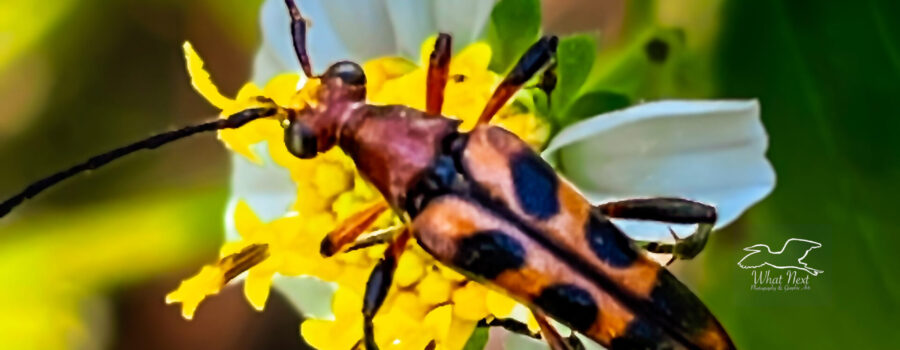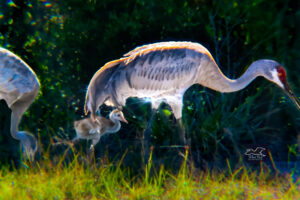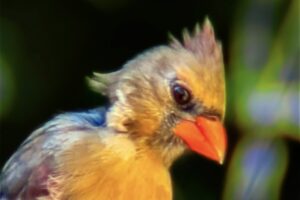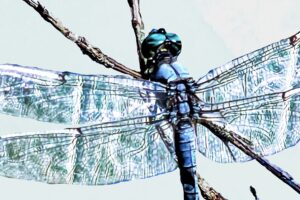The Slender Flower Longhorn Beetle is a Beautiful Fall Pollinator

There are lots and lots of beetles here in Florida (and all over the world) and they come in lots of sizes, colors, and even shapes. Most of them tend to be rounded in shape like ladybugs or stinkbugs, but there are a few that are thin and slender. One of the prettiest is the slender flower longhorn beetle (Strangalia famelica). It’s a fairly common beetle in the eastern United States and Canada and the adults feed on flower nectar and pollen. The slender flower longhorn beetle is one of many species of flower longhorn beetles that are known for their slim bodies and their long antennas. It the narrowest of the longhorn beetles, which earned it the species name of famelica, meaning famished.

By the fall, when I spotted this one on one of my blackjack bushes, this year’s beetles are all adults and are completely harmless. They don’t even bite or sting. Next year’s beetles, however, are larvae, and are eating rotten wood and plant material. This particular species eats only rotting plant material, but many of the flower longhorn beetles eat and damage the stems and trunks of live plants. For this reason, many of these beetles are called pests. They can be damaging to crop plants, crop trees, and many ornamentals including citrus, oaks, dogwoods, and many others. Fortunately, most of our native flower longhorn beetles, if they attack living trees at all, only attack trees that have already been weakened and will likely die anyhow.

Even though this particular type of flower longhorn beetle is pretty common in both the US and southern Canada, it has not been all that well studied. Most study has gone into invasive species that cause significant damages. The larvae of the slender flower longhorn beetle are actually good for the environment and even for agriculture since they help to recycle nutrients from deceased plants and trees back into the soil. Out here in the woods, we have plenty of fallen trees, leaf litter and plants that need recycling, so this pretty little beetle is a boon both in larval form and in it’s adult form.

These beetles can usually be found in adult form on many different types of flowers including Queen Anne’s lace, roses, most asters, carrots, and hydrangea. They’re known to be pollinators for these types of flowers, but how important they are is unknown. They are found in the adult form between May and September up north, but here they last well into November or even December. In south Florida you may find adults on flowers all year long. Each fall I see quite a few of these beetles crawling around on the flowers both in my yard and in the woods. I love their shape and their colors and I look forward to seeing them every year.






Recent Comments